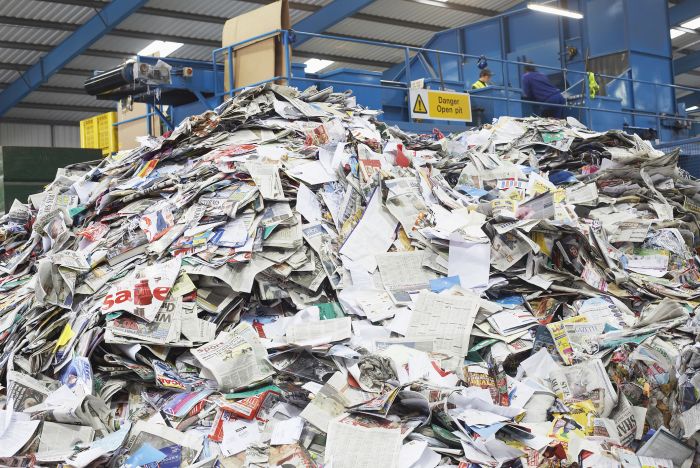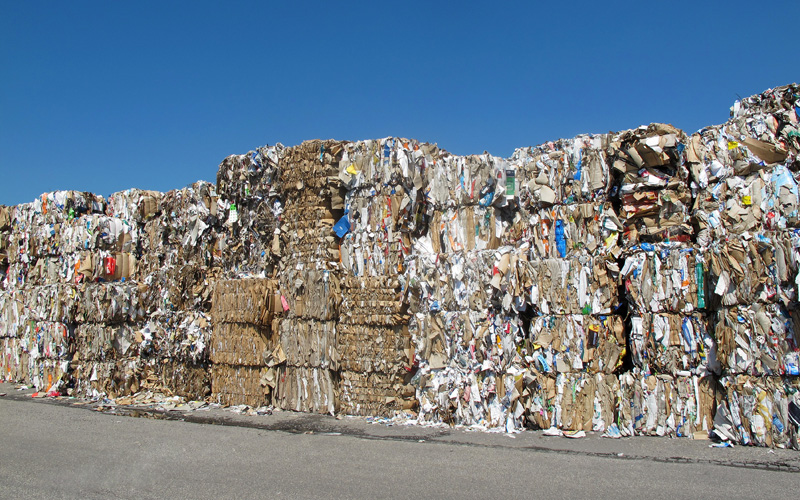From 2010 to 2060, the global consumption of pulp and paper is expected to double. The same will the amount of paper waste. An increased paper production will also add further to the pressure on the world’s forests that are already in a critical state – and constantly getting worse.
From 2001 to 2019, a total of 386 million hectares of forest were lost globally (in all forest types combined). This loss represents an almost 10 % decrease in tree cover since 2000.

Paper comes from Trees…
In today’s electronic age, people are starting to consider going paperless. But there’s still a long way to go before we lose our dependence on this very important human product.
From our newspapers to our paper wrappings, paper is still everywhere and most of them are ending up in our landfills creating a staggering amount of paper waste. There was a time when paper was a rare and precious commodity. Now it fills our planet. It was initially invented as a tool for communication, but today, paper is used more for packaging.
To produce paper takes twice the energy used to produce a plastic bag. Everything takes energy to produce.
In the case of paper, it also involves cutting down trees. Deforestation is one of the main environmental problems we’re facing in these times. 42% of all global wood harvest is used to make paper. Is it really worth it to cut down our life saving trees for this product?
Let us share with you these interesting paper waste facts. We are so used to seeing products in their completed form that we seldom think of how they are made and what happens after we dispose of them.
Facts about Paper and Paper Waste
- As we speak, more than 199 tons of paper has already been produced (paper production in 15 seconds).
- 324 liters of water is used to make 1 kilogram of paper.
- 10 liters of water is needed to make one piece of A4 paper.
- 93% of paper comes from trees.
- 50% of the waste of businesses is composed of paper.
- To print a Sunday edition of the New York Times requires 75,000 trees!
- Recycling 1 ton of paper saves around 682.5 gallons of oil, 26,500 liters of water and 17 trees.
- Packaging makes up 1/3 or more of our trash.
- S offices use 12.1 trillion sheets of paper a year.
- Paper accounts for 25% of landfill waste and 33% of municipal waste.
- With all the paper we waste each year, we can build a 12 foot high wall of paper from New York to California!
- Lessening of paper usage was predicted due to the electronic revolution. It didn’t happen. Demand for paper is expected to double before 2030.
- Every tree produces enough oxygen for 3 people to breathe.
Toilet paper waste
The global consumption of toilet paper is roughly 22 billion kilometers (if laid out) or 42 million tons. All that paper is the same as 50,000 times the circumference of planet Earth. Or a round-trip every 10 minutes.
Environmental Effects of Paper Waste
Deforestation is the primary effect of our mindless use of paper. Conservation groups have made an admirable headway in protecting ecologically rich forests and limiting commercial access. This is great progress for mankind! Just imagine how long a tree will grow to its full size…. We are only just realizing the wasted use of our trees – trees that give off oxygen and protect the planet from further Global Warming.

Paper pollution is another effect of paper waste and it’s a serious problem. It is estimated that by 2020, paper mills will be producing 500,000,000 tons of paper and paperboard each year! We obviously need this product and a reduction of use is not in the horizon. Pulp and paper is the 3rd largest industrial polluter of air, water and soil. Chlorine-based bleaches are used during production which results in toxic materials being released into our water, air and soil. When paper rots, it emits methane gas which is 25 times more toxic than CO2.
Environmental consequences of toilet paper waste
Producing 42 million tons of toilet paper requires:
- 712 million trees
- 1,165 millions tons of water
- 78 million tons of oil
10 Easy Ways to Reduce Paper Waste and Pollution
In North America, many paper companies are now modifying their processes to reduce the formation of dioxins. Dioxin is a toxic by-product of the manufacture of paper and it is a carcinogen. We are now seeking renewable sources of paper so we don’t have to cut down our beautiful life-giving trees.
What can you do from your end to reduce paper pollution and waste?
- Recycle all your paper waste.
- Be a conscious consumer and buy “100% post-consumer waste recycled”. Buy recycled paper materials or materials that came from sustainable managed forests.
- In the office, reuse paper. If you’ve only used one side for example, collect them instead of throwing them away. You can bind these sheets and make a notebook using the other side. This small effort reduces paper waste by 50%
- If you already have a scanned copy of a file, don’t print it anymore unless really needed.
- Use email instead of paper when communicating with clients and customers.
- Reduce the use of paper cups and disposable paper plates by keeping reusable items in the office pantry.
- Encourage your officemates and friends to recycle their paper by putting them in recycling bins.
- Insist on “Process Chlorine Free” paper materials.
- Buy products with the least paper packaging. Encourage businesses that follow environment friendly practices.
- Take advantage of the latest technologies like tablets, computers and smart phones to keep your files and notes.
As a consumer, the way you use and dispose of paper and other paper products greatly affect our paper waste. These small efforts on your part will be a valuable contribution in the resolution of our pollution problems today.
